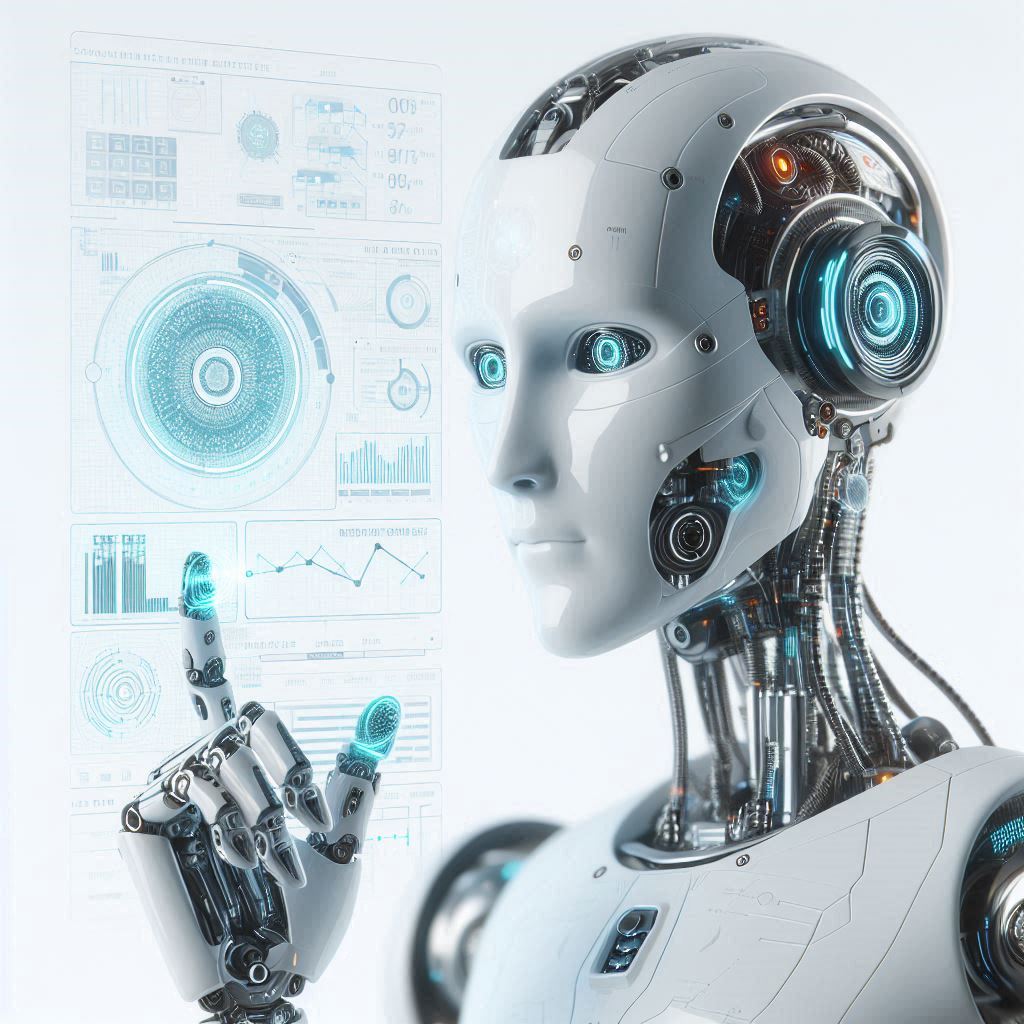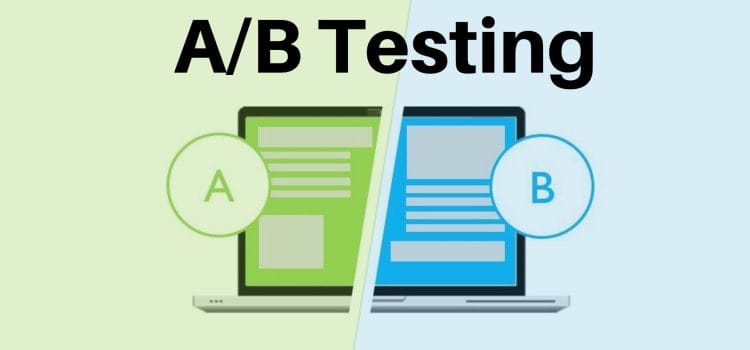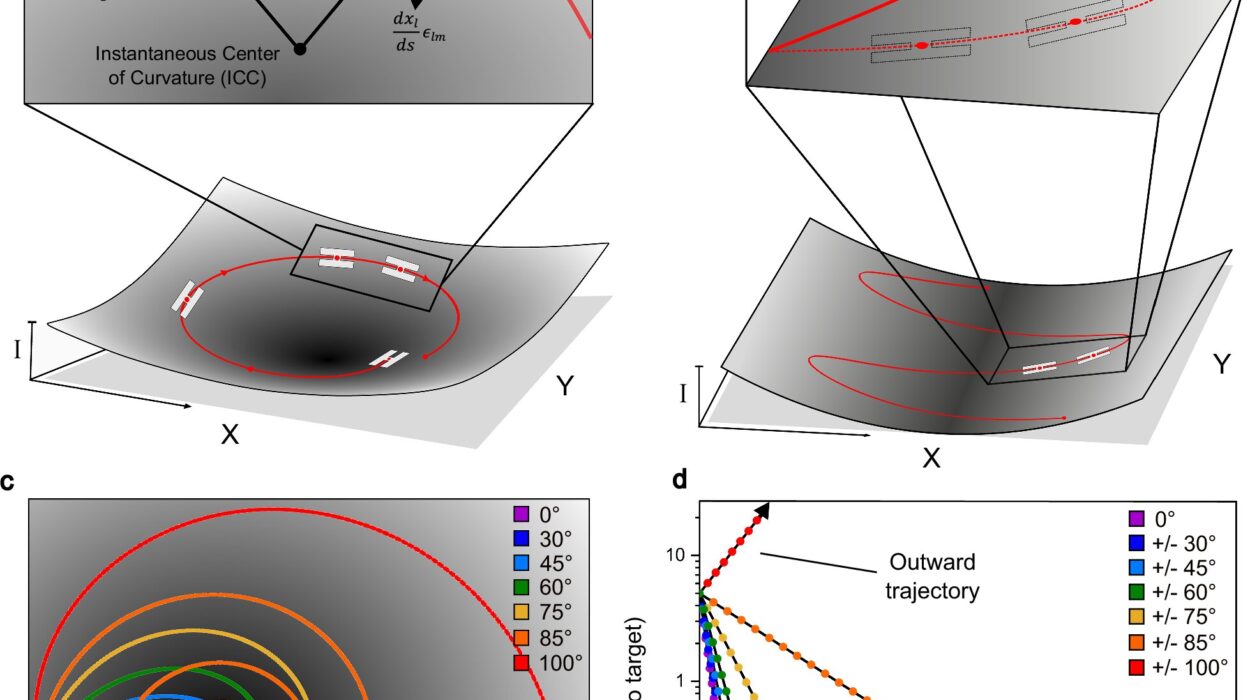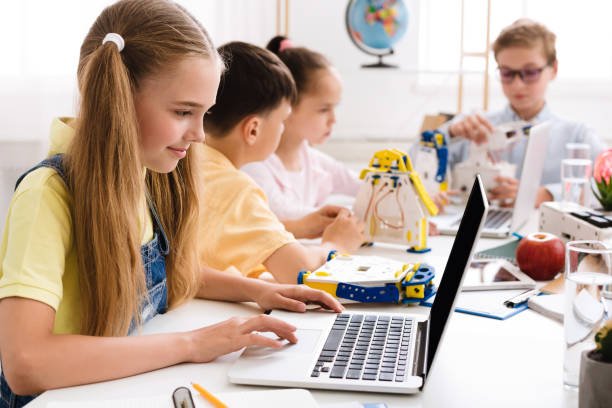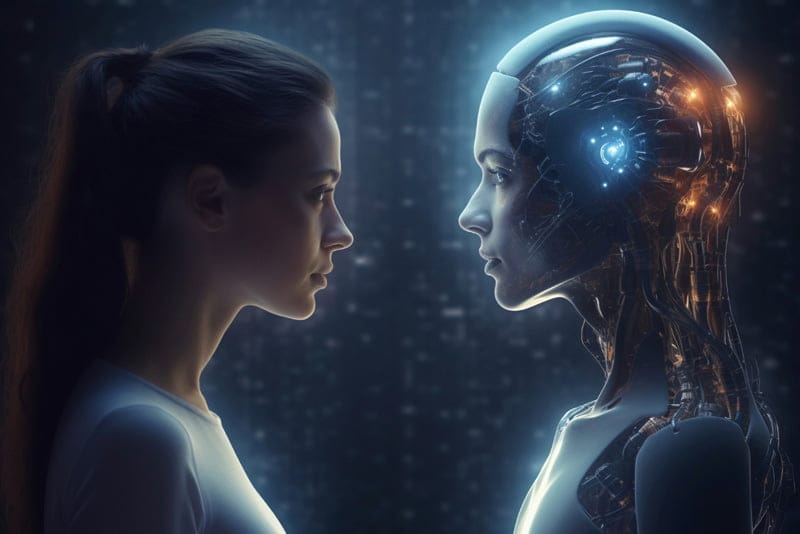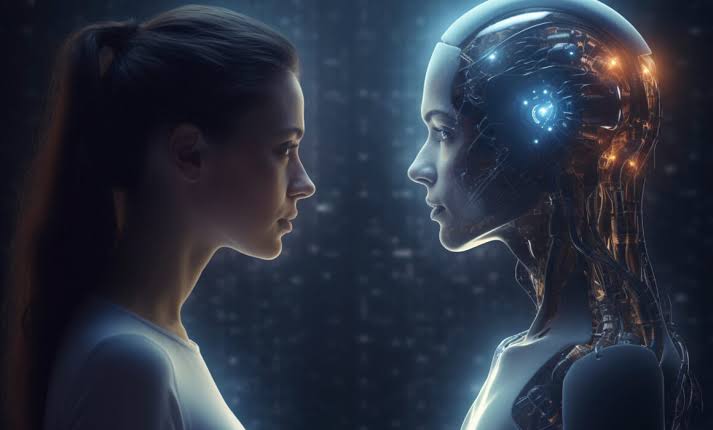Somewhere in a vast warehouse in Nevada, beneath a ceiling of metal girders and humming fluorescent lights, hundreds of robots glide silently across polished concrete floors. Each one looks like a squat, orange beetle, ferrying shelves of products toward human workers who pluck items with astonishing speed. They are tireless. They do not pause for water, or bathroom breaks, or wages. They recharge themselves, and then they glide back into the neon night.
It’s here, amid the thrum of servo motors and the gentle whir of conveyor belts, that one of the 21st century’s greatest anxieties comes into focus. For every robot gliding across these floors, a question hovers in the air:
Will machines replace us?
It’s a question as old as the Industrial Revolution and as urgent as tomorrow’s headlines. In coffee shops and boardrooms, on social media and factory floors, people debate it with a fervor bordering on panic. The conversation often swings between utopian visions of leisure and nightmares of widespread joblessness.
Yet behind all the headlines and think pieces, the question is not simply economic or technological. It’s deeply human. It touches the fragile nerve of who we are, how we find meaning, and what kind of future we wish to build.
When the Looms Roared
To understand the story of robots and jobs, we must first remember that we’ve faced this terror before. The echo comes from the clattering looms of 19th-century England. When automated weaving machines appeared, skilled artisans known as Luddites smashed the frames in desperation. Their livelihoods—and identities—were under siege.
Contrary to modern caricatures, the Luddites were not simpletons who “hated technology.” They feared that machines would turn once-proud craftsmen into disposable laborers, stripped of dignity and paid starvation wages. In many cases, they were right.
Yet history played a trick. Though mechanization destroyed some jobs, it created others in new industries. Mass production lowered costs, expanded markets, and raised living standards for millions. The Industrial Revolution birthed modern capitalism, urbanization, and the middle class. Progress extracted a heavy price—but it also built new worlds.
This dance of fear and hope has repeated across centuries. The printing press threatened scribes. Tractors threatened farmhands. Assembly lines threatened craftsmen. Computers threatened clerks. Each time, humanity staggered forward, wounded yet enriched.
But what happens when machines can not only lift heavy loads but also think, reason, and learn?
Rise of the Thinking Machine
It’s easy to picture a robot as a physical thing—a humanoid metal figure with blinking eyes, rolling on tank treads, perhaps speaking in a stilted voice. But the true revolution today is not merely mechanical. It’s algorithmic.
Artificial Intelligence—the software that can learn patterns, analyze data, and make decisions—has become the invisible skeleton supporting modern life. AI curates your music playlists, suggests what movies you’ll love, recommends who to date, and determines which posts you see on social media. It powers self-driving cars, reads X-rays for radiologists, and writes news blurbs about football games and stock market swings.
But the real shock came when machines began to write, draw, and converse in ways that feel deeply human. Natural language models can compose poetry, generate code, and draft emails. Text-to-image tools conjure realistic artwork from mere words. AI systems now craft marketing slogans, design logos, and even produce movie scripts.
Suddenly, it’s not just warehouse workers or taxi drivers who feel vulnerable. Lawyers, journalists, artists, doctors, financial analysts—the so-called “knowledge workers”—are realizing that the robots are coming for the cubicle, too.
The line between human and machine labor grows blurrier every day.
The Fragile Threads of Identity
At a dinner party in San Francisco last fall, a venture capitalist waved his wine glass and announced that “most of us won’t have to work in twenty years.” Across the table, a graphic designer set down her fork and said quietly:
“But…what will I be if I’m not working?”
She wasn’t just speaking of a paycheck. She was speaking of identity.
Work is not merely how we earn money. It’s how we introduce ourselves: “I’m a teacher.” “I’m a nurse.” “I’m an architect.” Work shapes our social circles, our purpose, our self-esteem. For many, it offers structure, meaning, and a sense of contributing to something larger than ourselves.
When people ask if robots will take their jobs, they are asking a question far deeper than economics. They are asking: Will I matter in the future?
This fear is not irrational. In a society where your worth is measured by productivity, being replaced feels like annihilation. Even for those whose jobs remain safe, the threat of displacement becomes an invisible weight pressing on the collective psyche.
A Changing Landscape
Yet statistics reveal a more complex story than the panic suggests.
A 2019 study from the Brookings Institution estimated that roughly 25% of U.S. jobs faced “high exposure” to automation in coming decades, especially in routine physical and cognitive tasks. Manufacturing, transportation, and administrative roles were particularly vulnerable.
But the same study—and dozens like it—found that entirely new job categories are emerging. Many of these require uniquely human traits: creativity, empathy, complex judgment, social intelligence. AI struggles with nuance, common sense, and cultural context—at least for now.
Consider this paradox: While software writes news briefs, the number of jobs for data journalists, digital content strategists, and AI ethicists is growing. While robots pack boxes, e-commerce has spawned logistics coordinators, software developers, UX designers, and customer success managers.
The World Economic Forum predicts that AI could displace 85 million jobs globally by 2025—but also create 97 million new ones. The net effect, at least in theory, could be positive. But that’s cold comfort for individuals trapped in the transition.
The Ghost in the Warehouse
Inside Amazon’s massive fulfillment centers, robots are everywhere. The Kiva robots ferry shelves to human pickers who select items. Software decides which packages get priority. Conveyor belts hum like arteries carrying consumer goods across the country.
Amazon insists that robots are “helpers,” freeing humans from repetitive, physically demanding labor. But the relentless pace of automation has turned many warehouse workers into flesh-and-blood appendages of the machine. Scanners beep. Lights flash. Algorithms monitor every second of productivity. Bathroom breaks become acts of rebellion. Workers describe exhaustion, injuries, and a pervasive sense of being surveilled.
These workers are not being replaced—yet. But they are increasingly controlled by invisible software bosses who set impossible metrics. It’s a glimpse into one dystopian future: humans as fragile biological cogs in an algorithmic machine.
When White Collars Tremble
For decades, white-collar workers felt safe. Factory layoffs were tragedies for others—the “blue-collar folks.” But the arrival of generative AI has rattled even the privileged professional class.
Legal tech startups now scan thousands of contracts in minutes, performing due diligence that once kept junior lawyers up all night. AI tools produce financial summaries, write ad copy, even generate entire website designs. Human workers increasingly become editors of machine output rather than creators from scratch.
The implications are staggering. Why hire a full-time paralegal if software can sift legal documents faster and cheaper? Why employ a fleet of junior marketing associates if an AI writes thousands of variations of slogans in seconds?
Even creative fields are trembling. In 2023, an AI-generated piece won a prestigious photography contest before the artist admitted it was synthetic. Designers are being asked to “just use Midjourney to sketch out concepts.” Hollywood writers went on strike in part to demand protections against studios using AI to draft scripts.
The same pattern repeats: AI does not fully replace skilled humans—but it commodifies creative labor, drives down prices, and threatens to concentrate power among those who own the algorithms.
The Productivity Paradox
Yet for all the technological breakthroughs, economists keep scratching their heads over a mystery: where is the productivity boom?
Despite predictions that AI and robotics would unleash explosive growth, productivity gains in many advanced economies remain sluggish. Some researchers call it the “productivity paradox.” We have astonishing tools—but they don’t always translate into broad prosperity.
Part of the reason is that integrating new technology is messy and expensive. Training systems, reshaping business processes, reskilling workers—it takes years or decades for societies to absorb truly disruptive innovations.
Meanwhile, the gains often flow to a narrow slice of society. Stock prices soar, tech executives grow fabulously wealthy, and the wealth gap yawns wider. The tools that might liberate humanity from drudgery instead risk deepening inequality.
Will We Work Less…Or More?
The utopian dream is as old as the industrial age: machines will do the boring stuff, freeing us for art, philosophy, and leisure. In 1930, John Maynard Keynes famously predicted that technological progress would reduce the workweek to 15 hours.
Instead, Americans work longer hours than almost any advanced economy. Gig workers hustle across apps. Emails buzz at midnight. In a cruel twist, new technologies often demand more availability, not less.
Will AI finally deliver the leisure Keynes promised—or entrench a future where humans are racing to keep pace with tireless digital rivals?
Some economists believe that, if society chooses wisely, we could indeed work less. Universal Basic Income, reduced workweeks, and new social safety nets could ensure that humans share the spoils of automation. But such outcomes require political courage, vision, and public debate.
Technology alone does not dictate our destiny. Politics, policy, and values do.
Beyond Jobs: The Human Touch
There’s another dimension often missing from the automation debate: the profound human need for connection.
A robot may serve you at a fast-food kiosk. But a smile from a barista can brighten a bleak morning. An AI might diagnose an illness with perfect accuracy. But a patient also needs empathy—a hand on theirs, a human voice saying, “I’m here.”
In nursing homes, experiments with robotic caregivers show promise. They help lift patients, monitor vitals, and even provide simple companionship. Yet many residents still crave human presence. Loneliness, not physical decline, is often the deepest wound of old age.
Will we accept a world where convenience trumps compassion? Or will we preserve the roles where human beings are irreplaceable—not for efficiency, but for love?
The Soul of the Machine
No discussion of robots and jobs can avoid the bigger philosophical question: Will machines ever truly “think” or “feel”?
Some researchers insist that AI systems, no matter how clever, are statistical parrots without consciousness. They process patterns but possess no inner world. Others believe that consciousness might eventually emerge from complexity—that a sufficiently advanced AI could become a genuine mind.
If machines do attain self-awareness, our moral calculus changes dramatically. Are such beings entitled to rights? Could they suffer? Would “employing” them be equivalent to slavery—or a new form of digital life?
These questions were once the domain of science fiction. Now they edge closer to reality. As AI grows more sophisticated, humanity faces an unprecedented ethical frontier.
A Future We Must Choose
So, will robots take your job—or make life better?
The honest answer is: both. Automation will destroy some jobs, transform many others, and create new work that today we can scarcely imagine. The real issue is not whether change is coming—but how we will shape it.
If left to market forces alone, the future could become a dystopia of concentrated wealth, disposable workers, and machines surveilling every breath. But with foresight, regulation, and compassion, we might harness automation to eliminate drudgery, reduce inequality, and grant humanity the freedom to pursue deeper joys.
Ultimately, this is not merely a story about technology. It’s a story about us.
When we gaze at the robots gliding through warehouses, or the software quietly writing our emails, we’re peering into a mirror reflecting our deepest hopes and fears. We’re asking whether we have the wisdom to make the tools we create serve the better angels of our nature—or whether we will become servants of the machines we’ve built.
In the neon glow of the future, the robots are coming. The question is not whether they will replace us—but whether they will liberate us. The answer depends not on the code we write, but on the humanity we choose to preserve.
